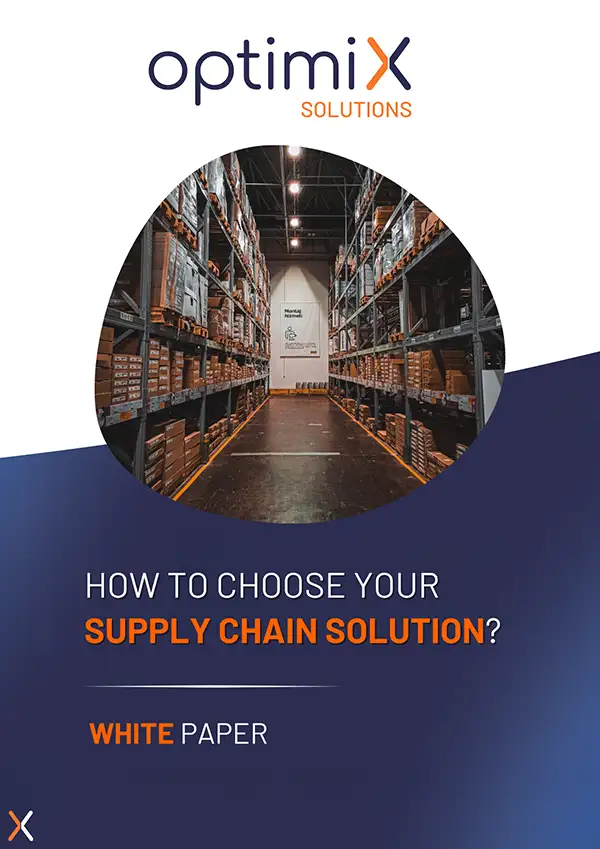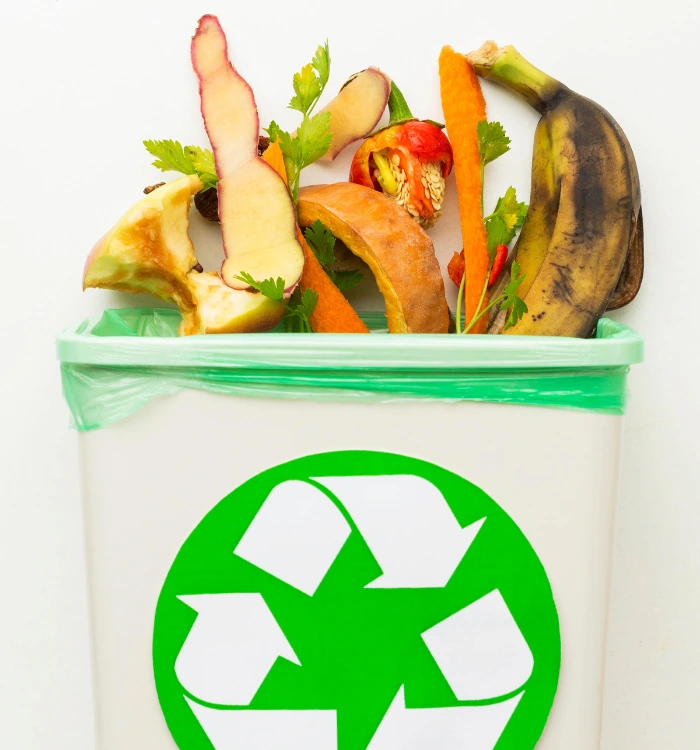In France, 10 million tons of food are lost or wasted every year.
Food waste has an exorbitant economic (estimated at 16 billion euros) and ecological cost (15.3 million tons of CO2 equivalent).
14% of these food losses occur at the distribution stage, 21% at the processing and packaging stage.
As environmental responsibility is at the heart of concerns, how can we reduce waste? What role can the supply chain play in combating food waste?
In this article, discover how efficient supply chain management contributes to addressing this challenge.
Better control of expiration dates and batches
For retailers, reducing food waste means reducing breakage, which is ensuring that products do not expire before they are sold.
The primary challenge is to minimize breakage in warehouses.. The solution lies in optimal management of batches and expiration dates.
To achieve this, you need to rely on an information system capable of precisely measuring stock levels, batch by batch, with associated expiration dates. If you have this level of accuracy regarding stock status and turnover rate, you can already anticipate breakage. You know when you will have to face spoilage.
Using this data, you can implement a coherent and proactive strategy to facilitate flow and reduce breakage.
Often, retailers are reactive. They realize they have products close to their expiration date in stock and face a risk of spoilage. To minimize waste, they sell the product at a reduced price. However, discounted products cannibalize regular products, which then also have to be discounted. This creates a vicious cycle where customers consistently seek out discounted items over regularly priced ones.
An optimized supply chain, based on accurate forecasts, a detailed understanding of stock status, and reliable projections, prevents such phenomena. It significantly contributes to limiting breakage and waste.
Optimize safety stocks
To reduce spoilage, another solution lies in optimizing the safety stock.
In orders placed with suppliers, retailers consider the service rate and additionally define a safety stock. Finding the right balance between safety stock and the risk of stockouts is a key challenge in the fight against food waste.
On one hand, a substantial safety stock can prevent stockouts, but it might also lead to spoilage. On the other hand, a smaller safety stock will limit spoilage but may result in lost sales.
Thus, there’s a trade-off between spoilage and lost sales.. Considering that if the retailer experiences spoilage on certain products, it impacts their margin, is it more or less advantageous to lose a few sales while reducing waste?
The challenge here is to optimize the safety stock level to maximize sales while minimizing spoilage. The retailer might be willing to accept lost sales to generate less spoilage, especially as this approach can be beneficial in terms of image and have a positive impact on the overall product range. This way, they avoid the vicious cycle of spoilage that we discussed earlier.
This trade-off requires a thorough analysis of data, accurate demand forecasts, and a good understanding of consumer buying habits. For this purpose, you can rely on a forecasting solution like Optimix XFR. With it, you’ll be able to base your orders on corrected sales histories and establish stock projections.
Refine sales forecasts
To minimize food waste, the accuracy of sales forecasts is of paramount importance. This is especially true for products with limited shelf lives, which generate significant losses if the forecast proves inaccurate.
In France, the average spoilage rate for fresh products is between 4 and 5%.
To reduce this rate, your sales forecasts must be very detailed and granular. When managing forecasts, it’s not enough to simply think in terms of products. You must also consider the risks of cannibalization between substitutable products.. Indeed, if one product is out of stock, customers might opt for similar alternatives. By anticipating these behaviors, it’s possible to adjust supplies more accurately and reduce waste.
The more accurate your demand forecast is, the more you can avoid wastage. For certain fresh products, like fish, your management should also take into account the time when a stockout occurs. If your stock runs out at 6 p.m., it’s not problematic. However, if you run out of fish at 11 a.m., you’re losing sales and causing dissatisfaction. By measuring the stockout threshold, you can continue to serve customers during peak demand times while limiting wastage.
Adapt the offer to the shelf life and packaging constraints
To reduce waste, you must also align with the expiration dates at the store level.. If you “overload” a shelf with products that have an inappropriate expiration date, you’re almost certain to end up with spoilage. Instead, you can try to adjust the shelf placement to facilitate the movement of products nearing their expiration date.
Similarly, when it comes to product assortment, increasing the range of products with short shelf lives also increases the risk of spoilage.
In this case, you have to balance between assortment depth and spoilage. Indeed, it’s easier to manage expiration dates when you have fewer listed products in a category.
Lastly, you also need to consider packaging constraints.. Manufacturers often have fixed packaging.
However, if the packaging size is too large for your in-store needs, you generate unnecessary overstock, leading to more spoilage. Here again, accurate forecasting and projections help adjust the ordered quantities to the actual store needs while considering the expiration date.
Reduce waste at the industrial or producer level
So far, we have mainly discussed food waste among retailers, whether at the warehouse or store level. But waste can also occur earlier in the supply chain, right from the production stage with manufacturers or producers.
Take the example of a chicken producer. He feeds his chickens so that they reach maturity at a specific time based on the orders he needs to fulfill. However, the window in which a chicken is good for consumption is very short. If demand is erratic, it’s clear that waste will occur.
To avoid waste at this stage, it’s essential to establish effective communication between all players in the chain, especially through sharing forecasts between retailers and their partners. If they have accurate information about future demand, producers can adjust their production, thus preventing overproduction and the need to discard products.
Shared forecasting also facilitates the planning of transportation capacities. Otherwise, products might be left on the dock and go to waste because the transport capacity was miscalculated.
- - - - - - - - - - - - - - - - -
The fight against food waste is a major economic and environmental imperative, a societal issue that concerns all stakeholders. Within retail, the supply chain is often highlighted as a potential area to reduce wastage.
Indeed, as we have shown, an optimized supply chain results in better management of batches and expiration dates, optimization of safety stocks, and refined sales forecasts to better align supply with demand and constraints.
From this perspective, a forecasting solution like OptimiX XFR allows for improved performance based on refined forecasts and reliable projections.
However, the fight against food waste cannot solely rely on the supply chain. It is a multi-faceted challenge that requires the collaboration of the entire society, from consumers to producers, through to distributors.









